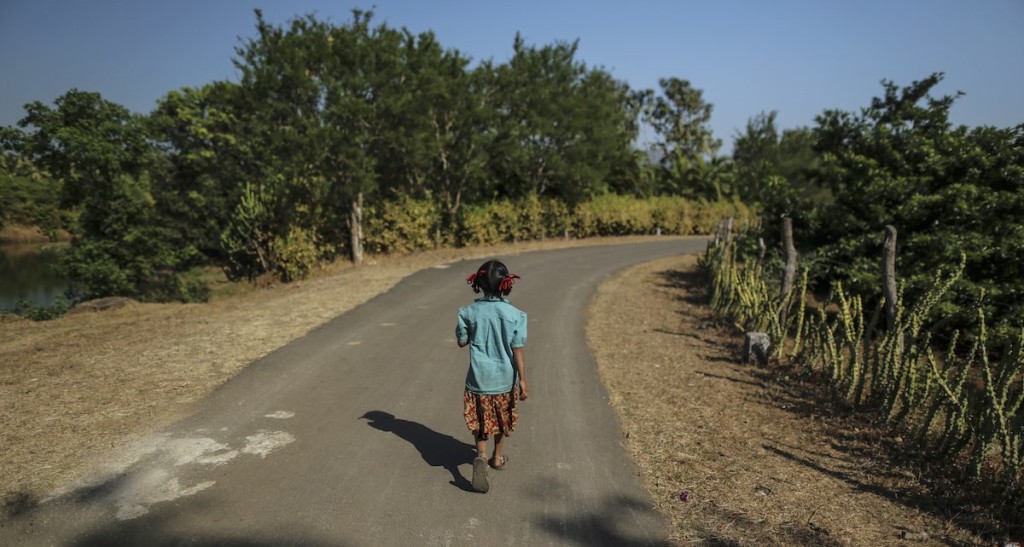A low poverty line results in diminished economic growth and flawed policies like demonetisation.
The development agenda today is largely about drawing an arbitrary line for poverty and focusing on a narrow goal of pulling individuals just above this line. Multilateral development organisations like the UN and the World Bank play an important role in setting the development agenda for poor and middle-income countries like India, but have not done enough to push for a realistic global poverty line.
The World Bank defines poverty as earning less than $1.90/day, after adjusting for purchasing power parity. The UN recently released its Multidimensional Poverty Index, which considers poverty to not just be a deprivation in income, but also in other indicators of well-being.
The international poverty line, however, remains the most intuitive and widespread tool used to measure poverty.
But many economists have found that there is no discontinuity (or sharp non-linearity) around the poverty line in any objective/subjective indicator of well-being. In other words, there exists no line of poverty.
If development agencies insist on having a line for use as proxies for poverty measurement like the head count ratio (HCR), then it should be at a much higher level to enable us to assert with 100 per cent confidence that people above this line are NOT poor. Not only is the current poverty line too low, leading to far too many people being excluded from the development agenda, but this low line is also nudging governments and international development agencies to focus exclusively on programmatic and targeted approaches to poverty reduction.
There are approximately one billion people (call them ‘extremely poor’) below the $1.90 line and 1 billion (call them ‘prosperous’) above the $15 line (set by OECD/rich countries). That leaves 5 billion people who are poor by a reasonable global standard of poverty, but not poor according to the $1.90/day definition. This is a dangerously low-bar definition of poverty – no one in the history of mankind has celebrated crossing the $1.90 threshold (thank you Lant Pritchett for that great metaphor).
A focus on reducing $1.90/day poverty excludes the legitimate concerns and needs of 5 billion people from the development agenda. In Indonesia, for example, the headcount $1.90/day poverty was only 10.6 per cent in 2016 – which means, 9 in 10 Indonesians weren’t included in the international “end extreme poverty” agenda even when many of them experienced unacceptable deprivation in human well-being.
Similarly, according to the $1.90/day definition, only 4.7 per cent of Indians are extremely poor, but a democratic government cannot base its development agenda by excluding 95 per cent of the country’s population. Hence, an Indian government has very little incentive to form an agenda specifically for the poor. This becomes a relevant point with 2019 general elections just around the corner in India. Political parties cannot win an election with agendas that exclude most citizens.
The $1.90 line is surely not an adequate measure of global poverty – analysts have suggested that $7.40/day is the minimum necessary to achieve decent nutrition and life expectancy. Therefore, agencies like the World Bank should have a higher global poverty line ranging between a lower bound of $7.40 and an upper bound of $15 (poverty line set by rich countries). That would enable us to say for sure who is poor and who is not. A broader agenda is necessary to focus on raising 6 billion people into prosperity as opposed to an exclusionary goal that makes gains only for 1 in 7 people on the planet.
In the Indian example, when the poverty line is broadened, obviously a larger proportion of the population gets included in it – something like 95 per cent of the Indian population. And the only way to reduce poverty for 95 per cent of the population is through market-led processes – i.e., economic growth. So, in a sense, the low bar poverty line constraints development thinkers and practitioners to implement redistributive models of development, which are more likely to be zero-sum games. Broadening the poverty line would allow and force us to look at a positive sum model of economic growth where everyone benefits. After all, most of the reduction of poverty in the world has indeed come from sustained episodes of economic growth, and increased labour mobility.
According to a study by Pritchett, et al. (2016), the growth accelerations in India in 1993 and 2002 led to a total gain of $3.7 trillion – a gain that wouldn’t have existed had there been no acceleration in economic growth. This phenomenal achievement was possible because of the shift towards more market-oriented policies at the general level, which led to a period of sustained economic growth. A corollary of the understanding that economic growth is the best way to reduce poverty would be that any policy that holds back or diminishes growth without any long-term benefits is criminal and should not be undertaken. An apt example of such a policy in the Indian context is demonetisation, which economists suggest led to a decrease in India’s growth rate with no significant benefits on its stated objectives.
Policymakers and citizens need to understand and appreciate the supreme importance of economic growth. Having a realistically higher poverty line will be an important step towards that goal.
Article Credit – ThePrint

